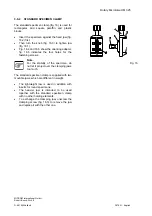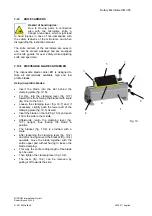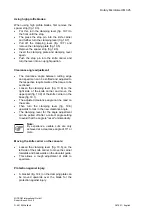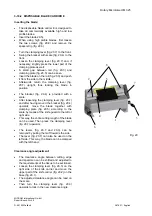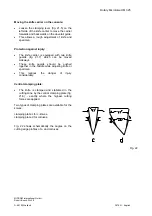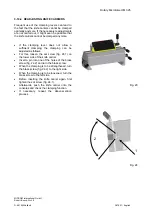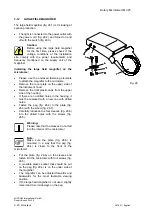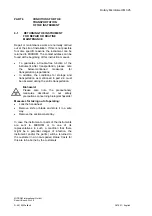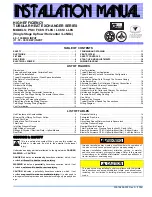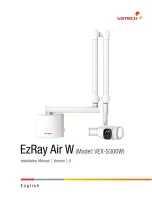
Rotary Microtome HM 325
MICROM International GmbH
Robert-Bosch-Str. 49
D- 69190 Walldorf
387821 - English
Using high profile blades:
When using high profile blades, first remove the
spacer strip (fig. 19.3).
•
For this, turn the clamping lever (fig. 19.7) to
the front until the stop.
•
The press the stop pin into the knife carrier
and further turn the clamping lever (fig. 19.7).
•
Pull off the clamping lever (fig. 19.7) and
remove the clamping plate (fig. 19.5).
•
Remove the spacer strip (fig. 19.3).
•
Insert the clamping plate and clamping lever
again.
•
Push the stop pin into the knife carrier and
turn the lever into an upright position.
Clearance angle adjustment:
•
The clearance angle between cutting edge
and specimen can be shifted and adjusted to
the respective requirements of the tissue to be
sectioned.
•
Loosen the clamping lever (fig. 19.8) on the
right side of the knife carrier and move the
upper part (fig. 19.9) of the knife carrier on the
base (fig. 19.1).
•
The adjusted clearance angle can be read on
the scale.
•
Then turn the clamping lever (fig. 19.8)
upwards to lock in the new clearance angle.
•
The clamping lever for the angle adjustment
can be pulled off after a correct angle setting
to avoid that the angle is "reset" unintendedly.
Note:
By experience, usable cuts are only
achieved at a clearance angle of 10° or
more.
Moving the knife carrier on the console:
•
Loosen the clamping lever (fig. 19.6) on the
left side of the knife carrier, to move the carrier
forwards and backwards on the dovetail guide.
•
This allows a rough adjustment of knife to
specimen.
Protection against injury:
•
A bracket (fig. 19.4) on the clamping plate can
be moved upwards over the blade for the
protection against injury.











